4. The Barskoon Valley
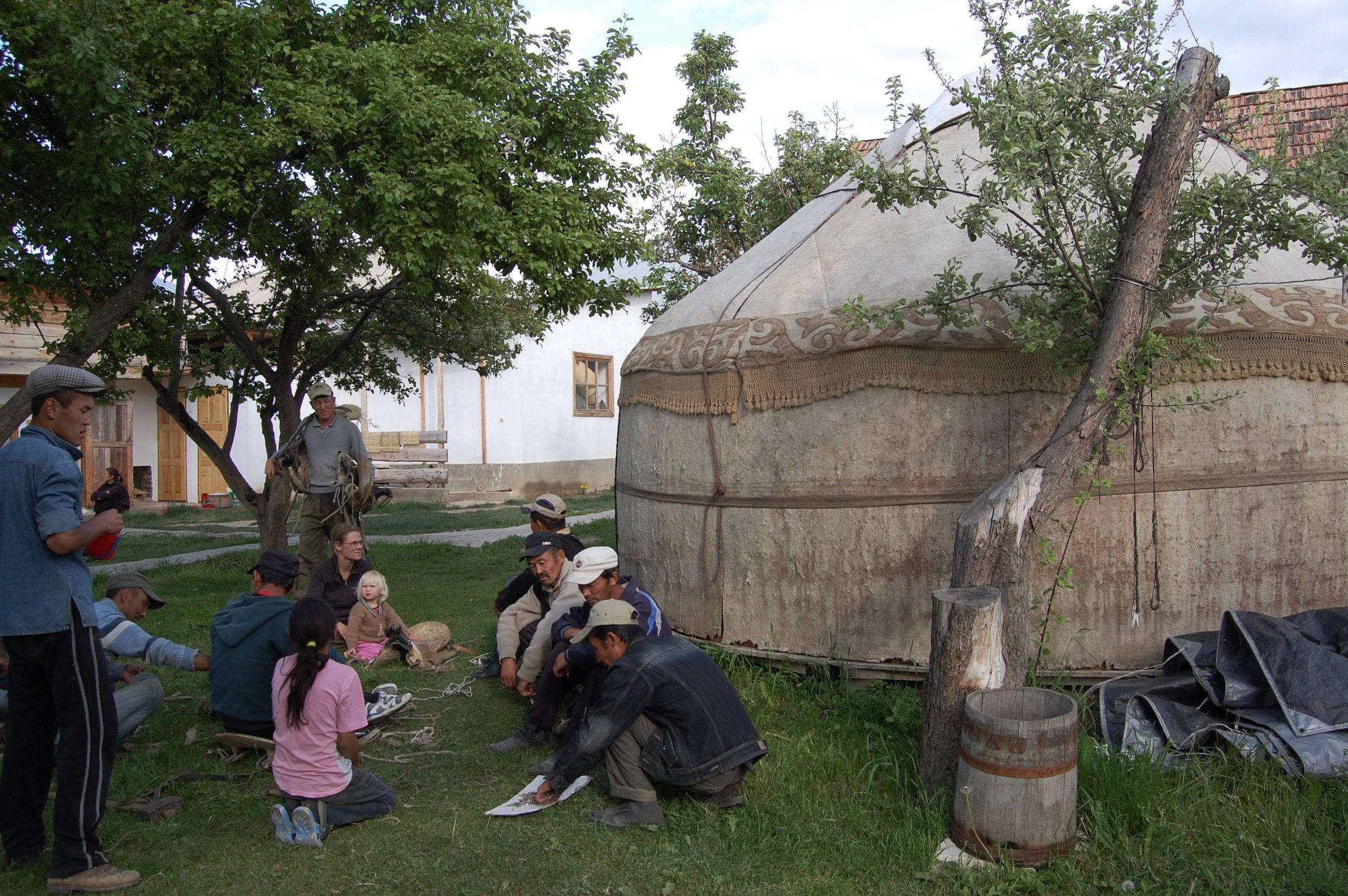
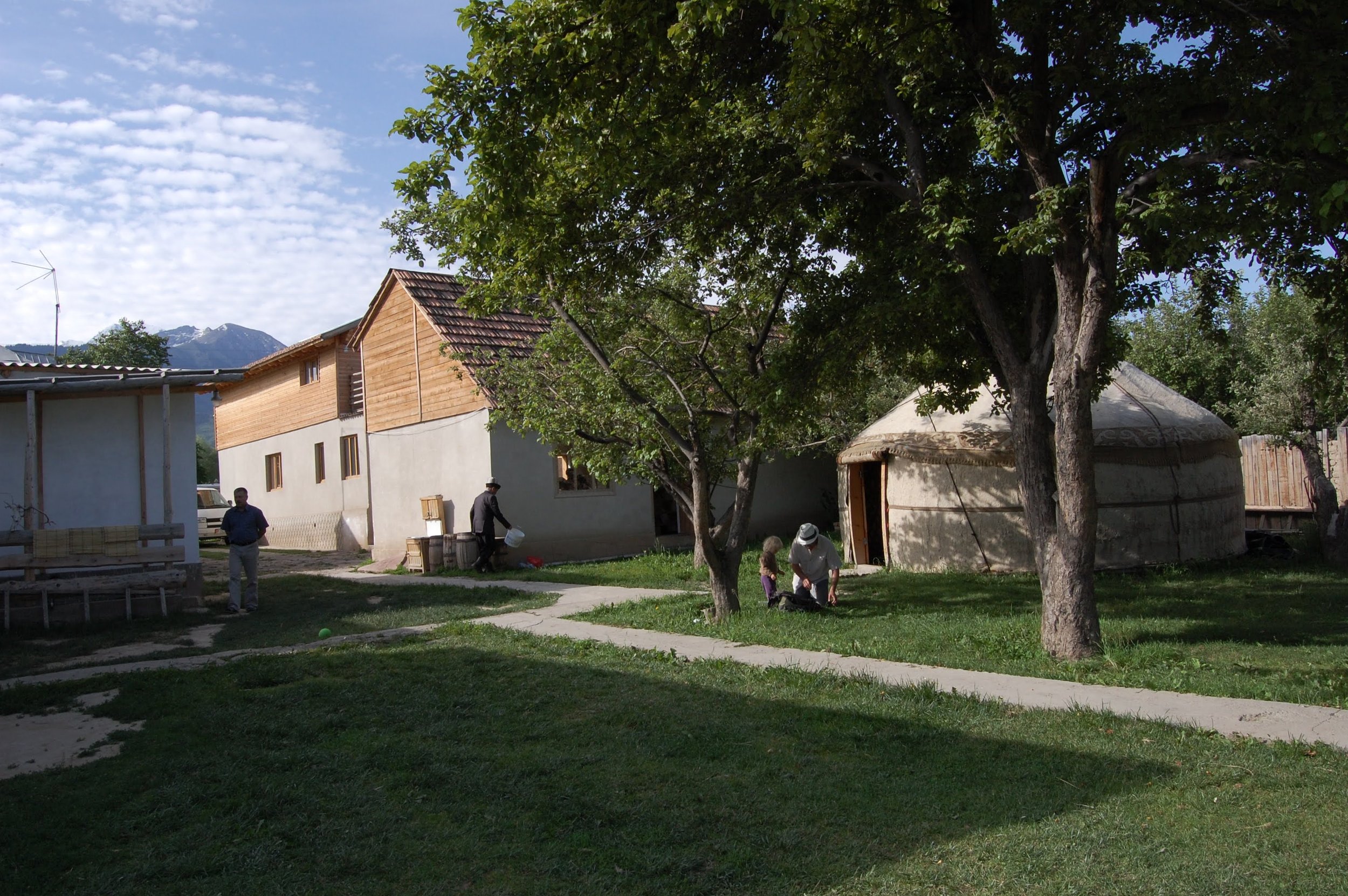
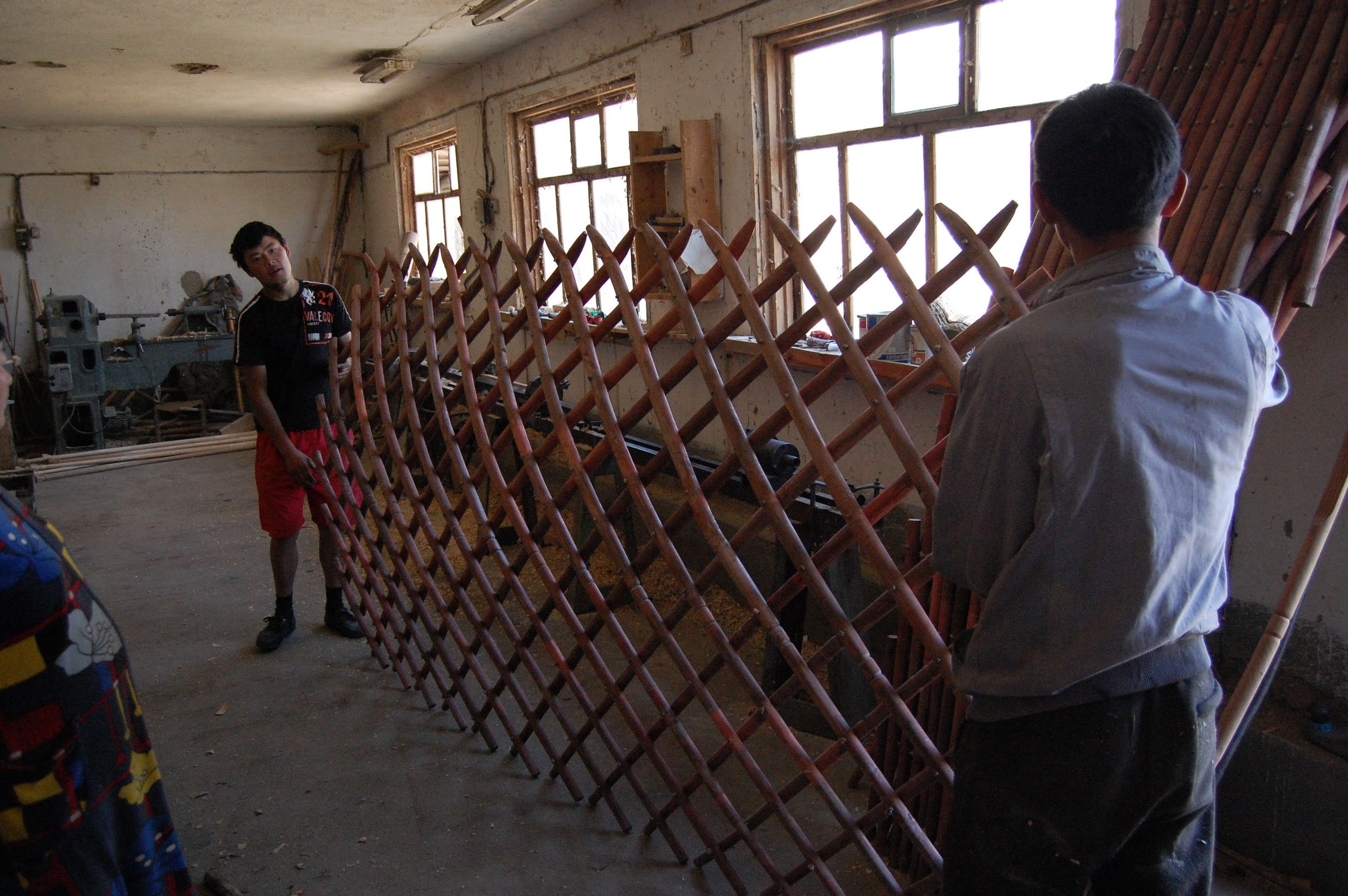
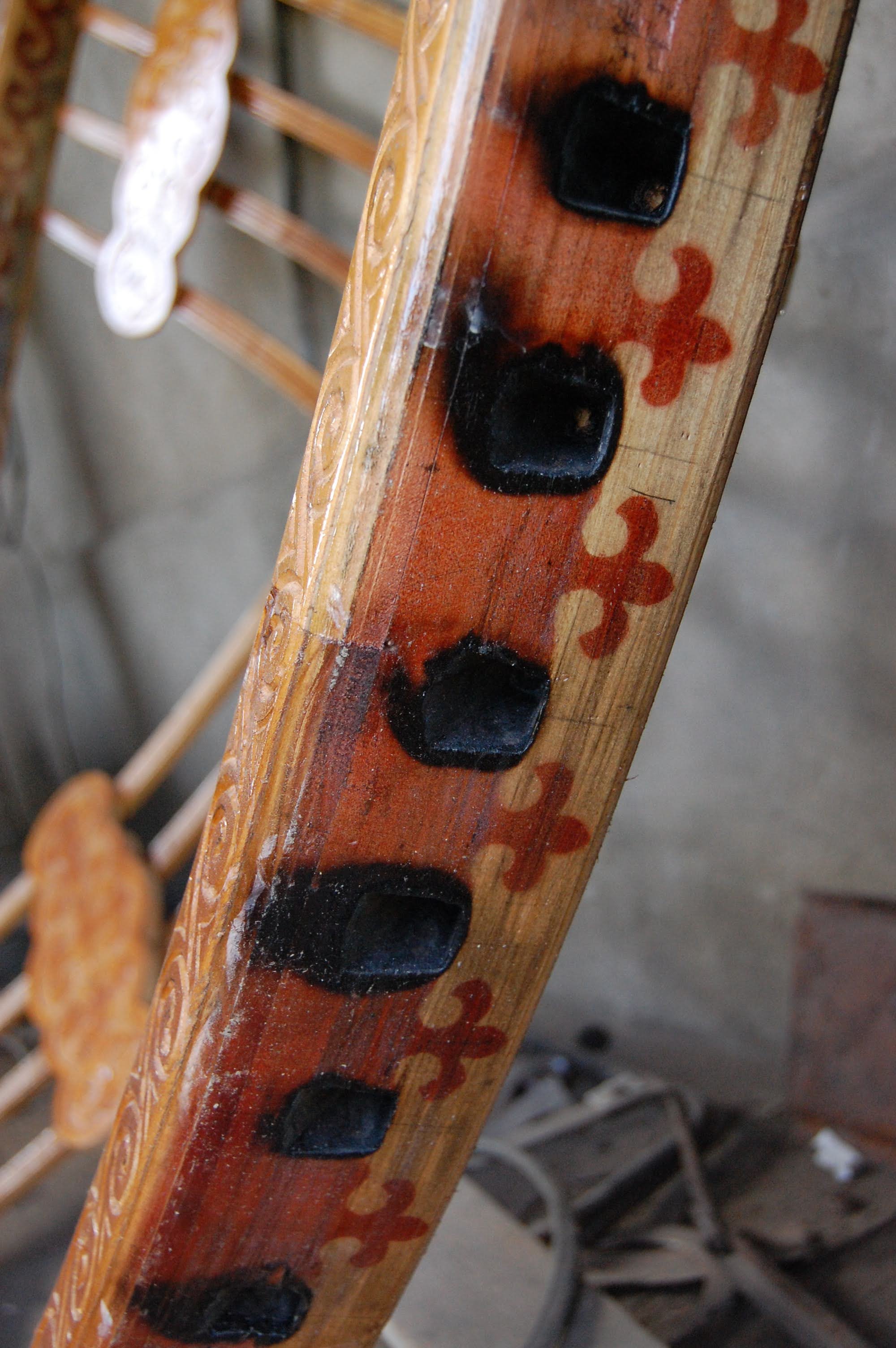
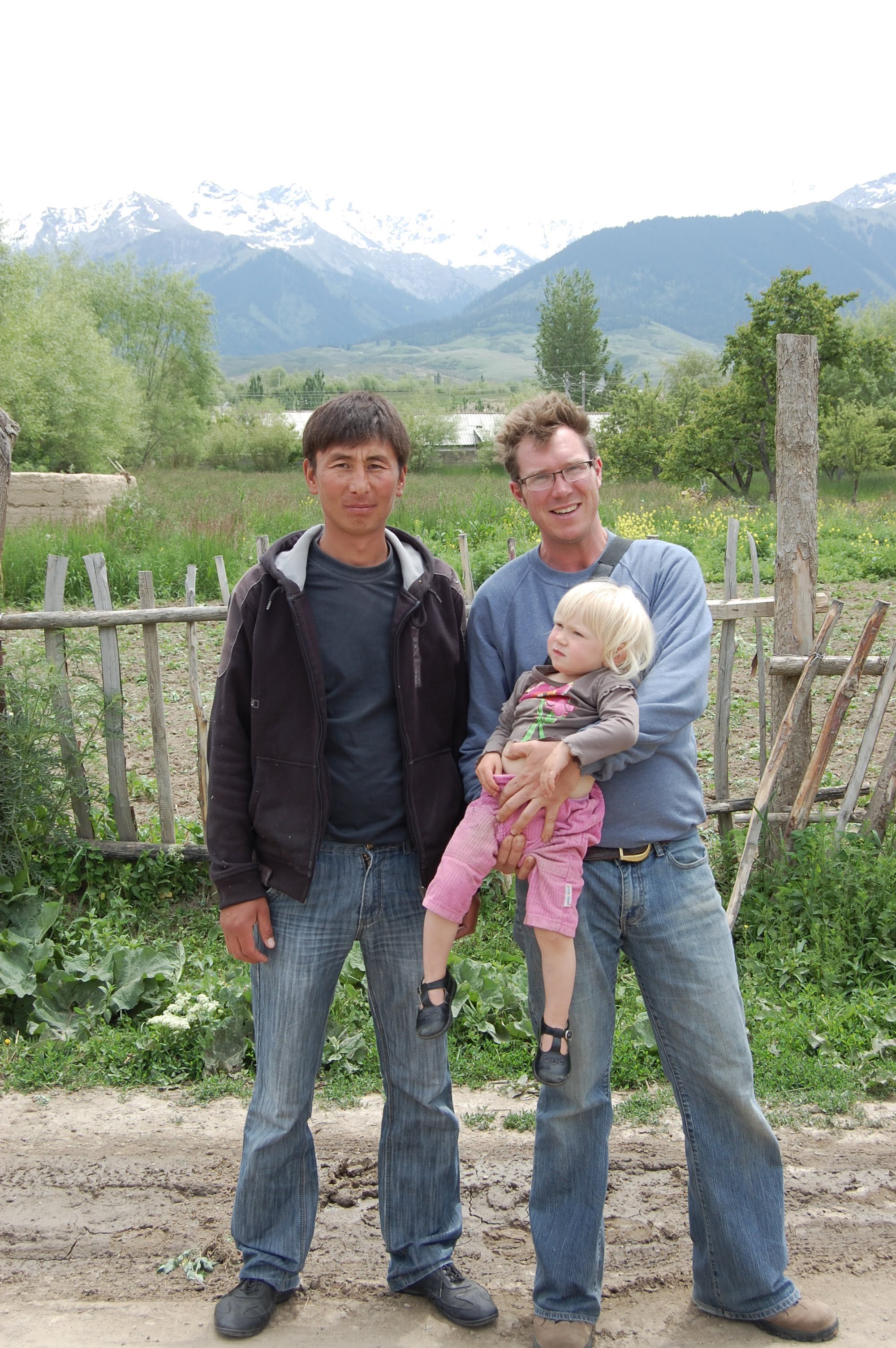
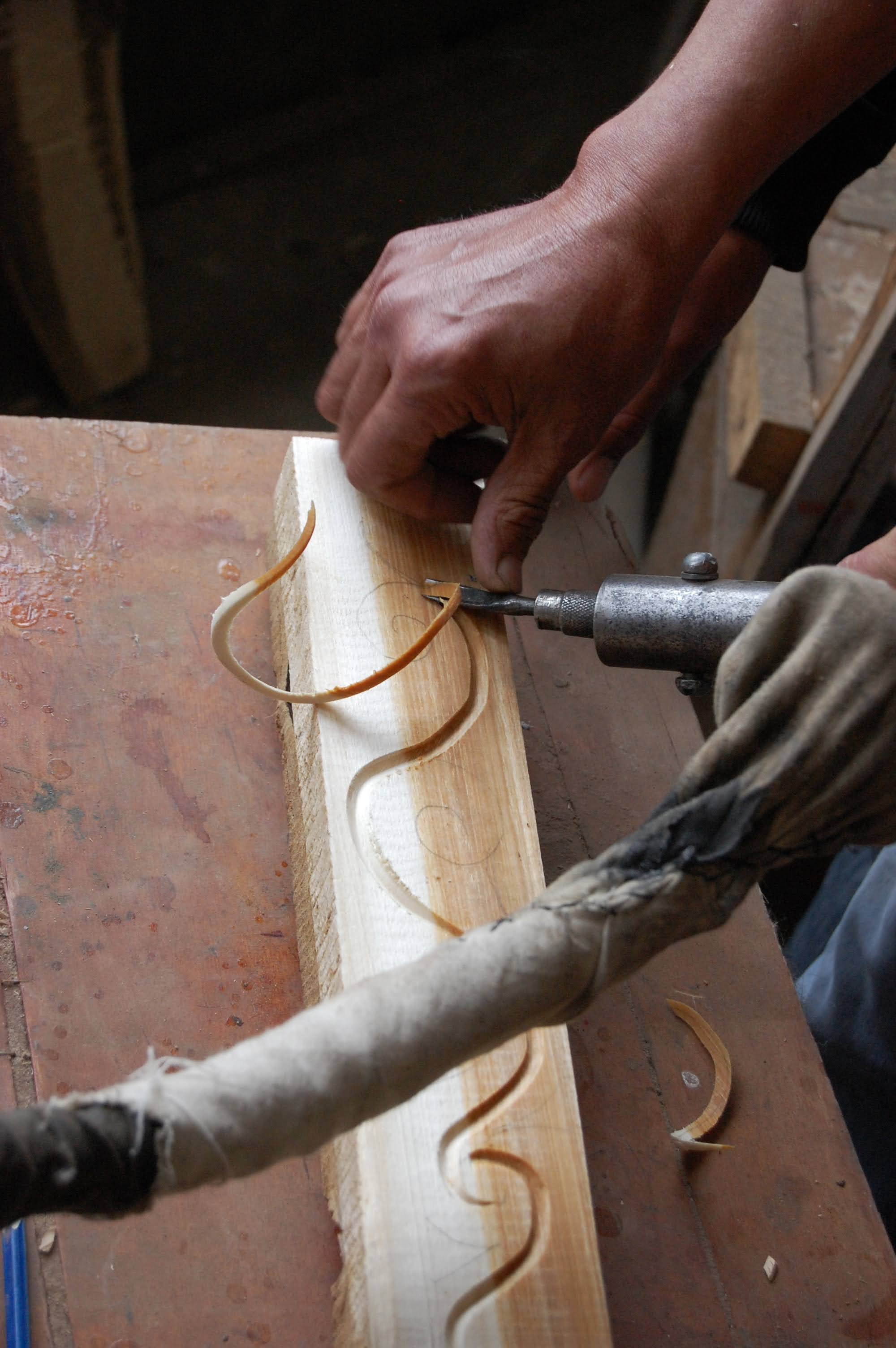
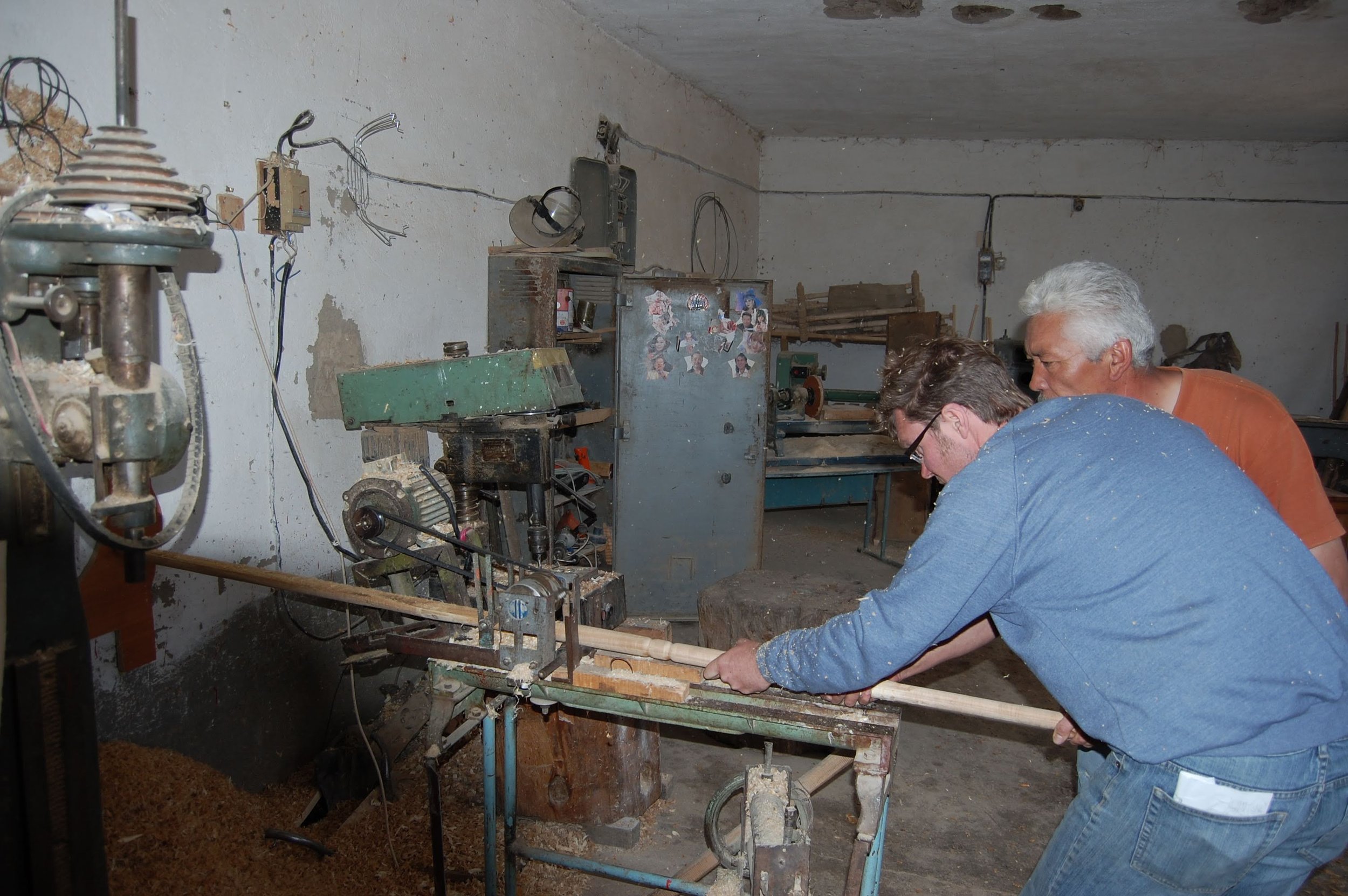
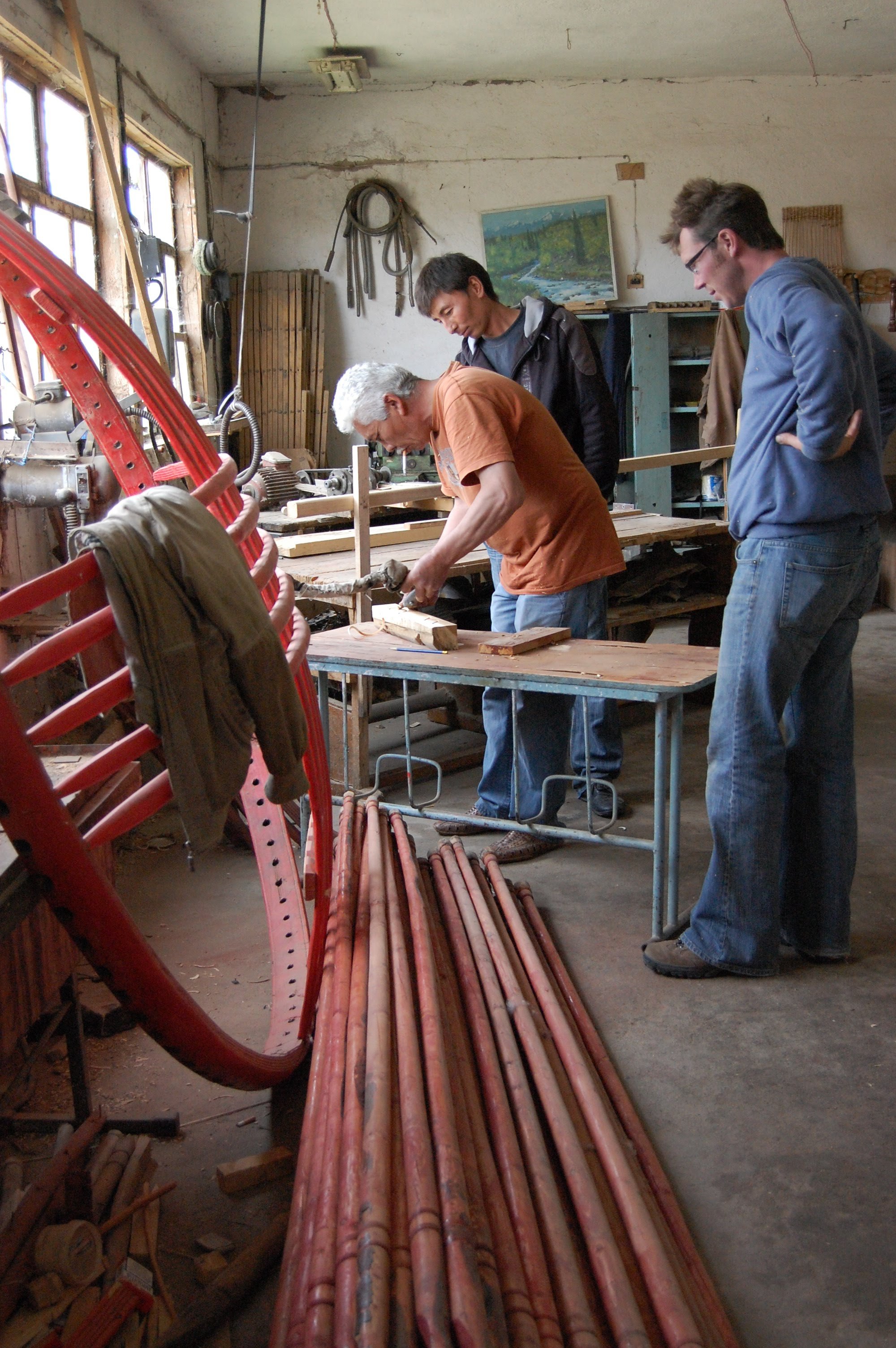
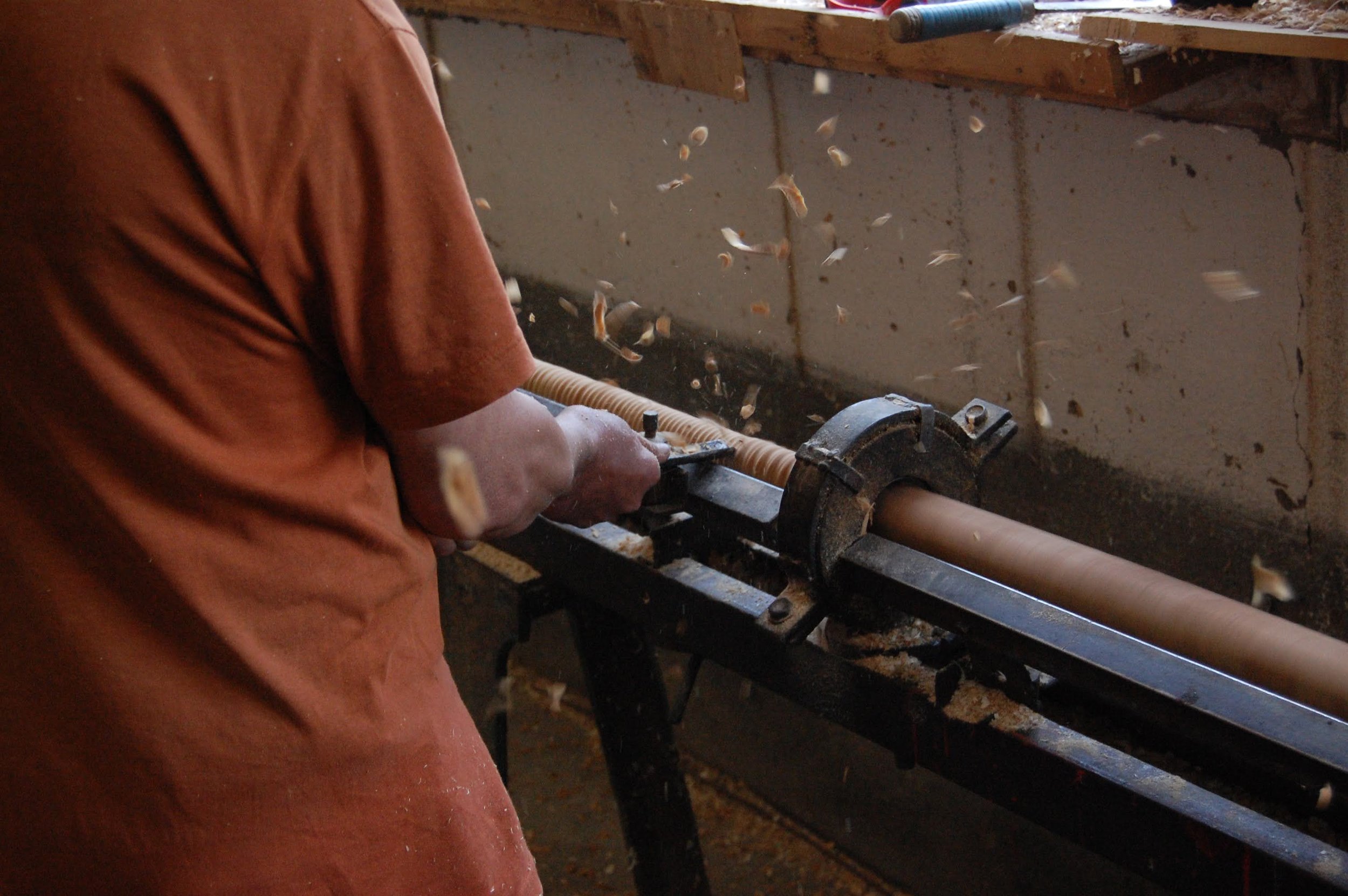
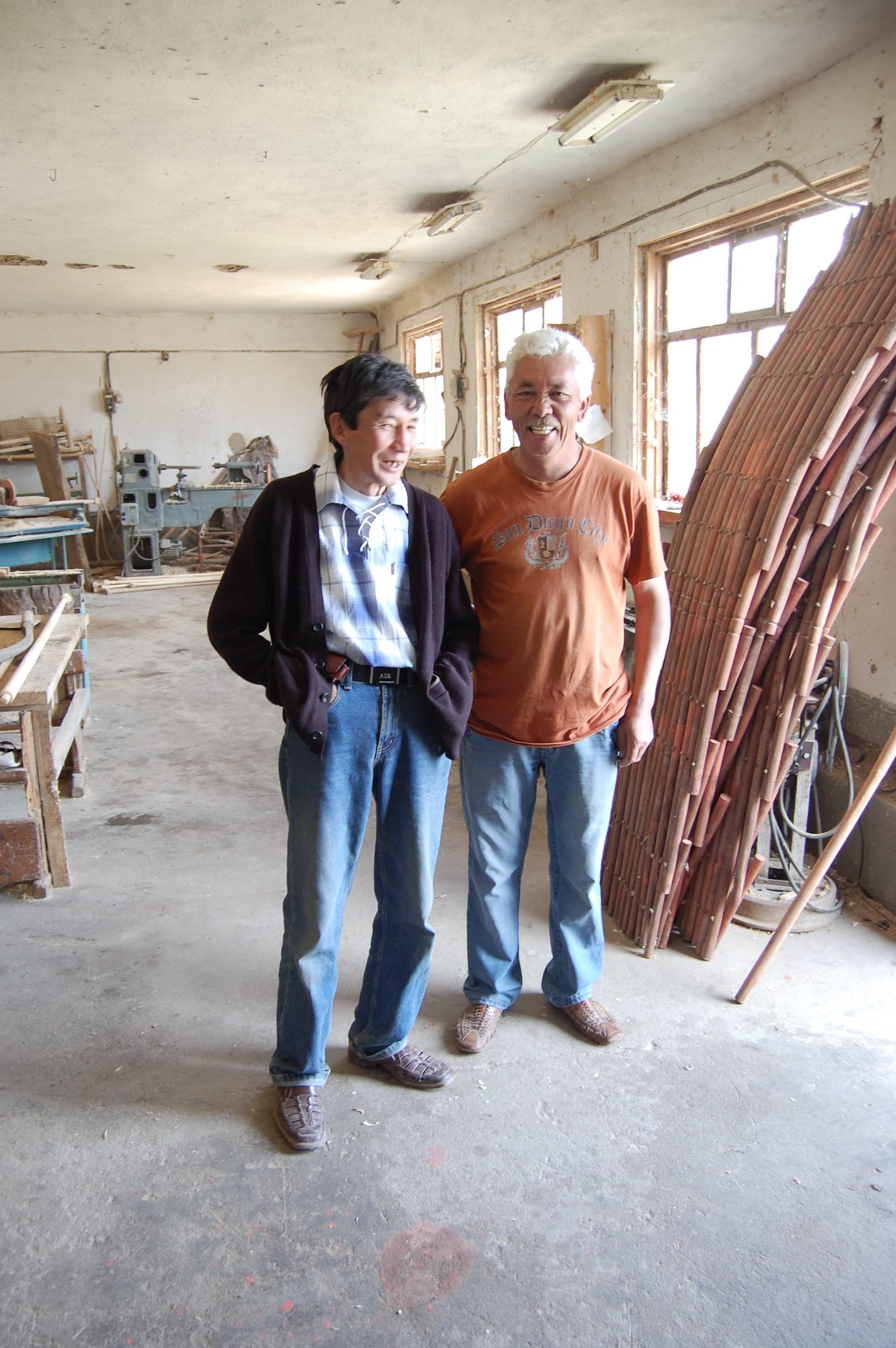
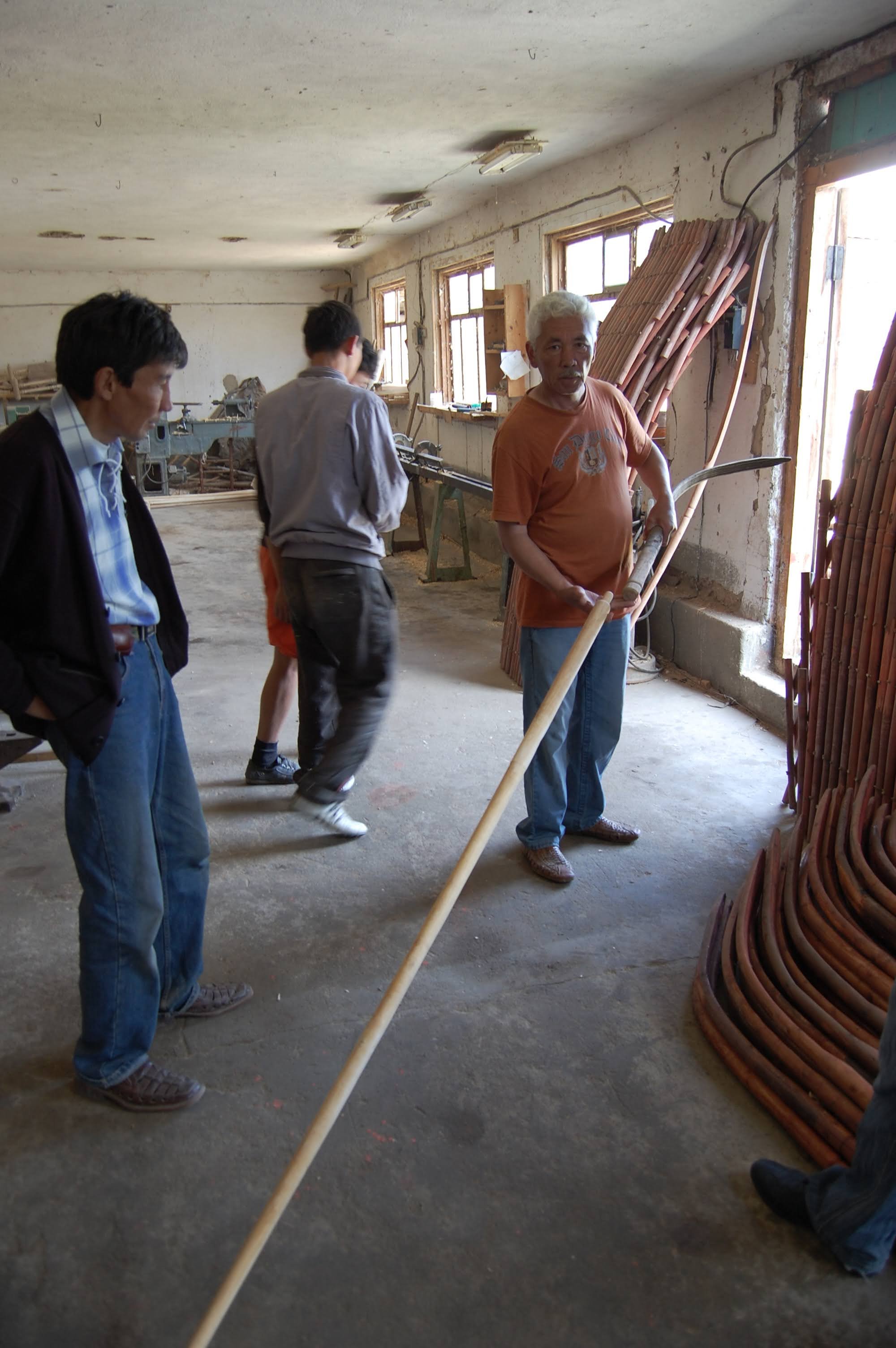
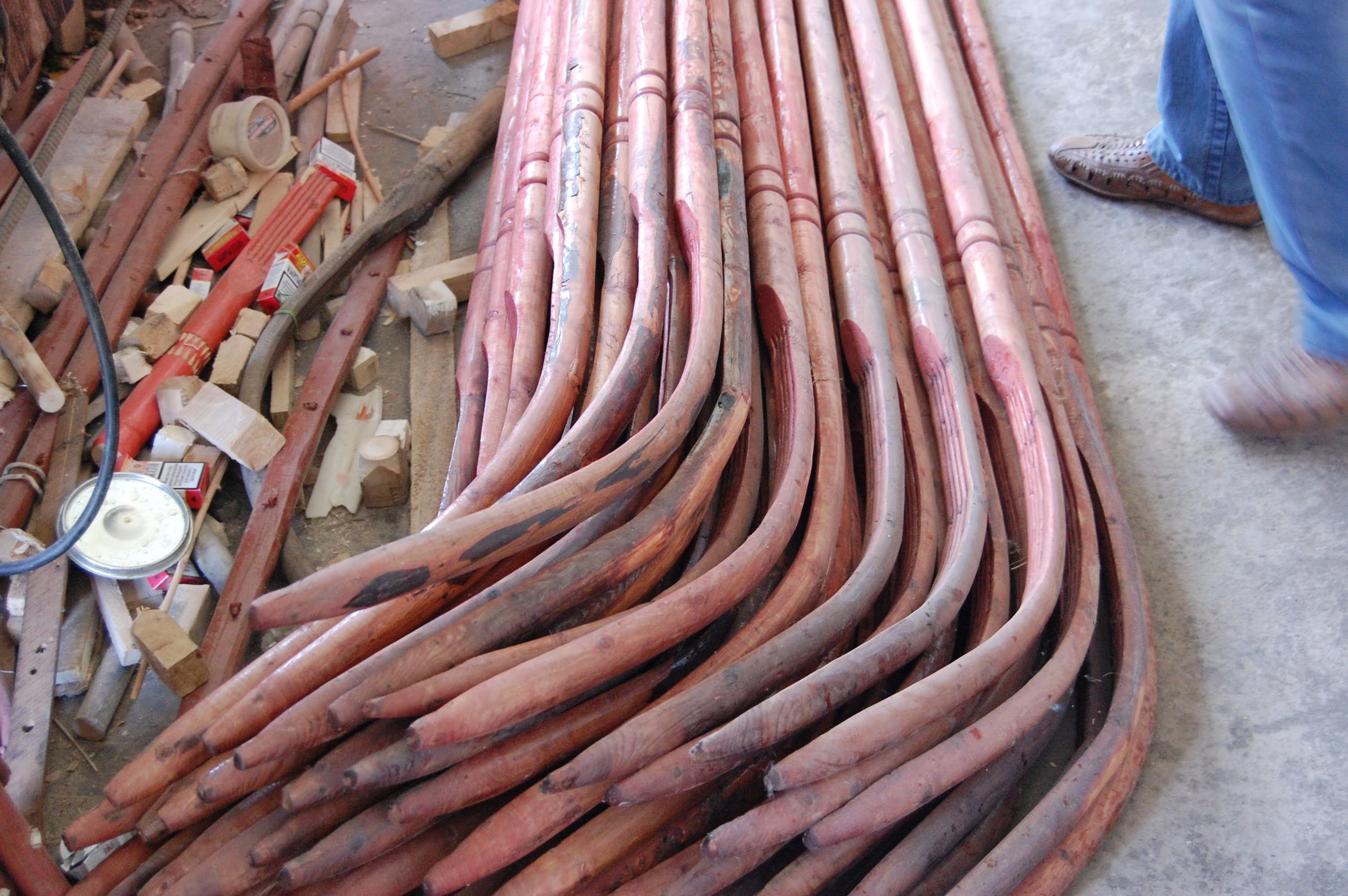
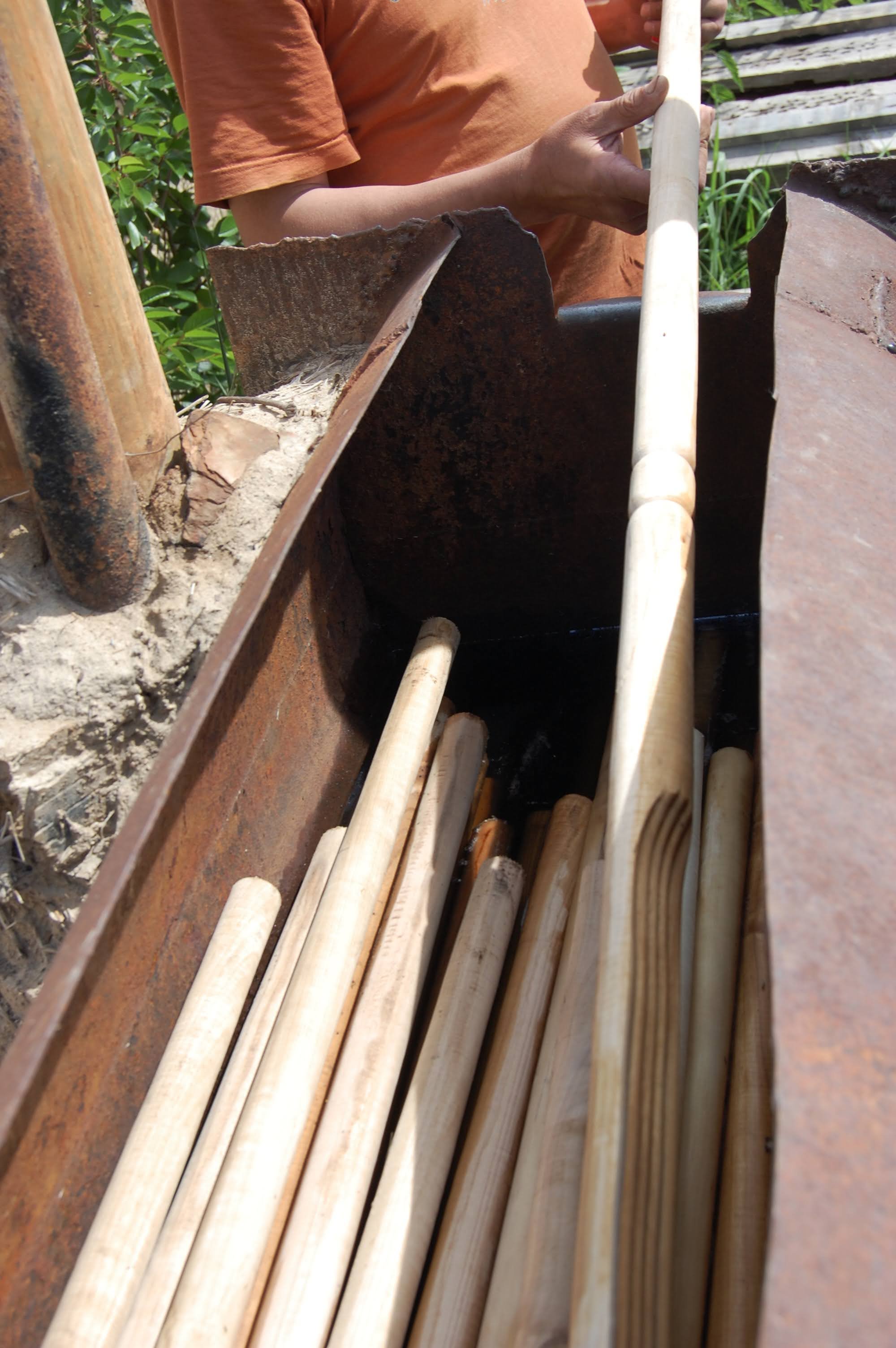
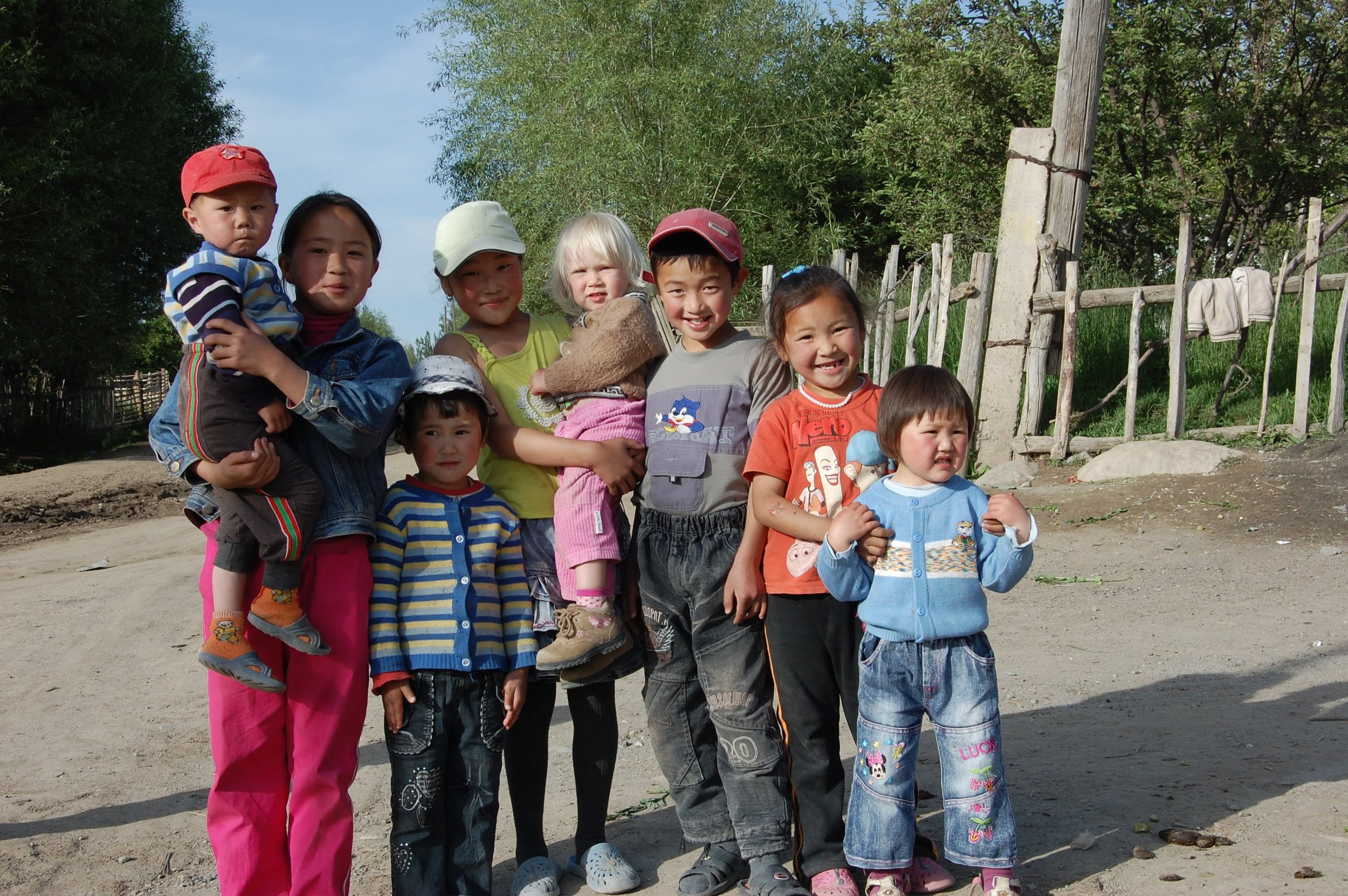
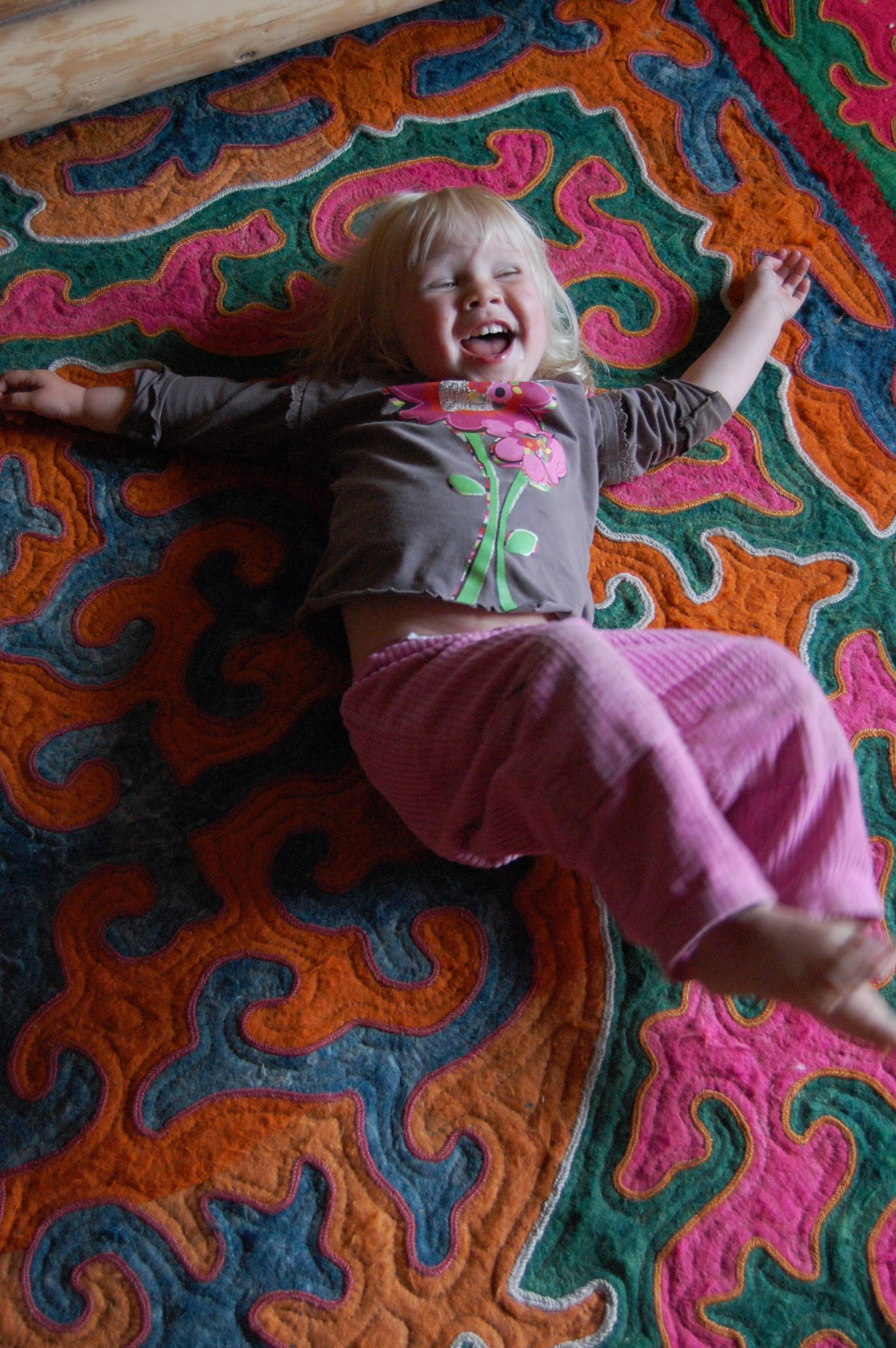
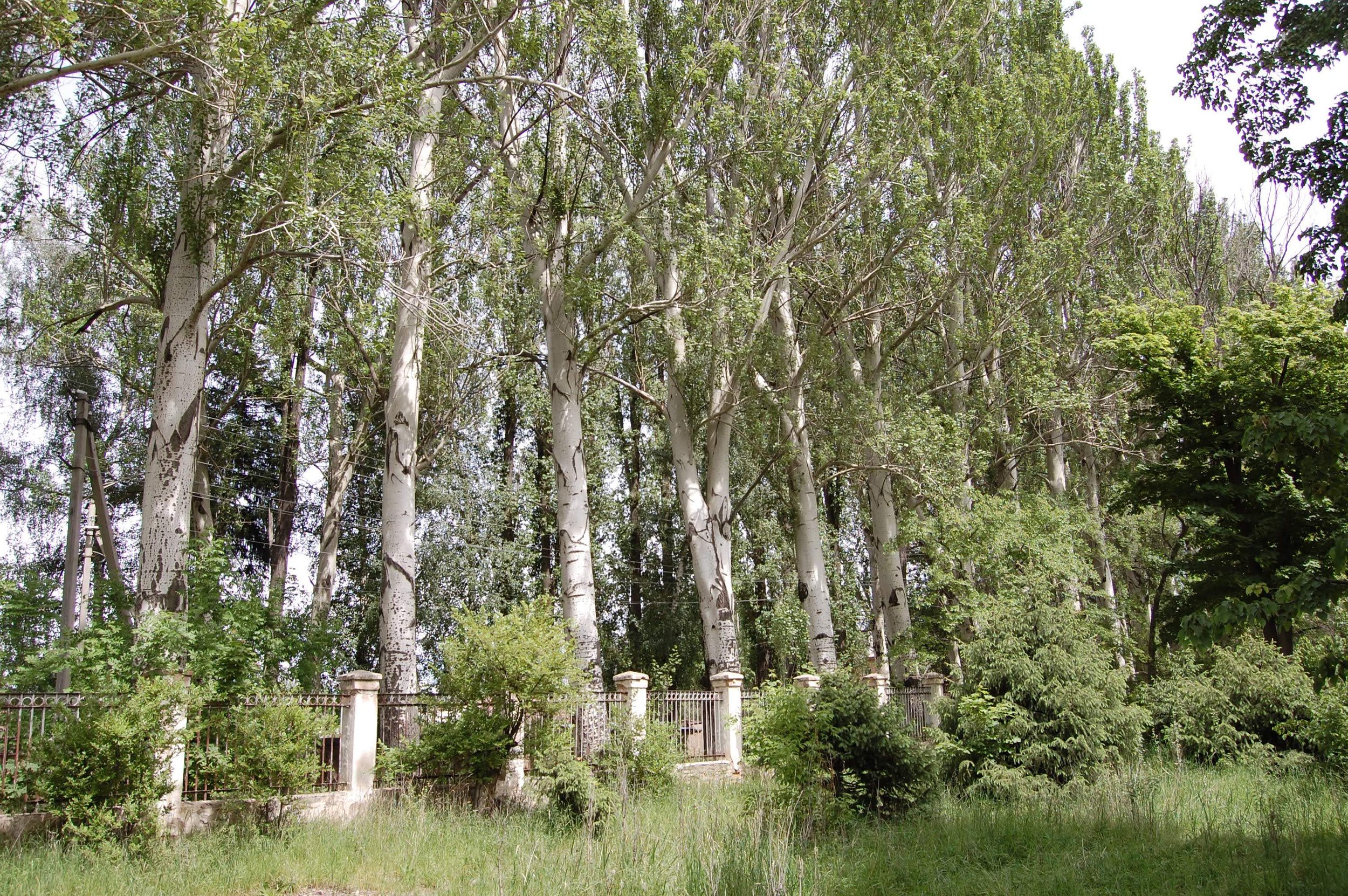
The mountains seemed even closer here; it looked like it wouldn’t take long to walk up to the snow capped peak. Rash, one of the owners of Shepherd's Way Trekking, welcomed us to Barskoon. We first heard of Sheppard’s Way in our Bradt Guide to Kyrgyzstan. It mentioned that Sheppard’s Way, a family run business, could organize a visit to a yurt makers workshop. The home was beautiful, with wooden details, and shyrdaks in every room. A white felted yurt, elaborately decorated, was set up in the backyard, along with a dozen trekking tents, and saddles in the process of being repaired. We met the kitchen staff, two very friendly ladies, and a Swiss couple who had been there for a month but were also helping out with repairs and building. Our room was large, and had a balcony overlooking the mountains!
After lunch, Rash took us to meet Mr Meken, a yurt builder in town. We brought our picture book and explained our yurt business realizing that both of us are keeping old traditions alive. He was friendly and open to the idea of us staying for a few days to learn about his building techniques, share ours, and work together on his current building. Mr Meken also has a textile workshop where four women are employed to make felted covers, shyrdaks, chij, woven bands, and yurt decorations.
In the morning we met our interpreter, Maxzat, a delightful young Kyrgyz man. We all piled into a small car and joined Mr Meken at his workshop. Mr Meken shared that in 1995 he won first prize at a yurt competition and was invited to go to San Diego, California to exhibit his yurts. Mr Meken also gave a musical performance on a three stringed fiddle and brought out many traditional Kyrgy costumes. The museum had paid Mr Meken to come exhibit his work and he then set up his workshop in Barskoon. Since then he has made yurts for the Kyrgyzstan, Kazakhstan and Russian presidents, and had also had an exhibition in the UK and Scotland.
Mr Meken explained that he wants to keep the traditional yurt design, but was not happy with either the strength of the tal (willow) or the way it holds its bend. To our surprise, he was building with mostly poplar and fir. The poplar was boiled in water to soften it before bending and to leach all the sap from the wood. Mr Meken wasn’t bothered by a crossed grain because with short fibre poplar it isn’t as important, although he avoided knotted areas of wood and cut his square stock from only old poplar trees (60 plus years). We took a look at the uuk (roof) poles, made of mostly fir for the longer uuk, but also poplar due to the lack of availability. The fir cracks a little as it dries but is quite stable. Sometimes Mr Meken joins a fir pole to a bent poplar end with mortise and tenon to make a longer pole. Mr Meken showed us the boiling box and bending jig for the kerege (walls), which has two clamping bars at each end. He then showed us his machines for preparing both the uuk and kerege. These were a selection of cleverly home made lathe and cutting tools.
The uuk were then ready to go in an upright boiler that just boils the ends. We went to look at the tunduk (wheel), which was mostly made of tal with poplar lamination to cover cracks.He makes tapered drill holes in the tunduk and then burns a tapered square with a small hole through to let the steam out. Mr Meken does not like the mortises to show on the inside of the wheel. He showed us his carving machine with a vibrating chisel head which looked like a dentist's drill.
